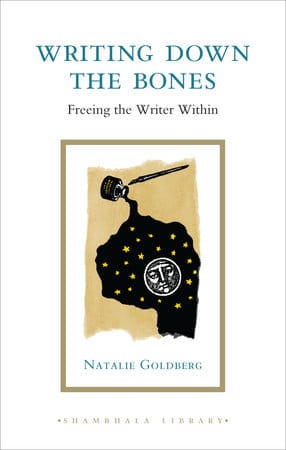
In a previous post, What you must know before you start writing, I mentioned Natalie Goldberg’s First Thoughts writing experiment from Writing Down the Bones. I wrote about it as an opportunity to give your imagination the chance to surprise you, as a way to overcome writer’s block. And I explored the idea of incorporating the experiment into your daily routine because I feel it’s equally helpful to all writers, new and experienced. In this post, I want to share the complete First Thoughts experiment.
Natalie Goldberg introduces the experiment by suggesting it as a timed exercise. Ten minutes, twenty minutes, or an hour. You can increase the duration over time, or you can start big. It doesn’t matter. What matters is that you define the duration of the experiment before the session, and you commit yourself for the full period. These are her six rules:
- Keep your hand moving. (Don’t pause to reread the line you have just written. That’s stalling and trying to get control of what you’re saying.)
- Don’t cross out. (That is editing as you write. Even if you write something you didn’t mean to write, leave it.)
- Don’t worry about spelling, punctuation, grammar. (Don’t even care about staying within the margins and lines on the page.)
- Lose control.
- Don’t think. Don’t get logical.
- Go for the jugular. (If something comes up in your writing that is scary or naked, dive right into it. It probably has lots of energy.)
The Benefits of First Thoughts
Goldberg writes that these rules are necessary to burn through to first thoughts, to a place where energy is unobstructed by social politeness and internal censorship. She wants writers to train their minds to see and feel, and she goes on to write about the potential of capturing oddities.
First thoughts are the way the mind flashes on something. We’re not used to living in this world. Usually, a person is confronting thoughts on thoughts. We naturally edit them, and by the time we write or speak them, they’re the second or third version.
Natalie Goldberg’s First Thoughts wants you to meet your thoughts without ego, control, and the logic that proves that the world is permanent and solid. She shares the example of Zen meditation. You sit cross-legged and, no matter what you feel, you continue to sit. You learn to remain steady and confront the energy, as her writing experiment encourages you to do.
These mentions of energy and meditation aren’t for everyone; I know that. But I believe that every writer can identify with the purity of that first thought and the subsequent pursuit to capture it in writing. That’s what we do.
And it isn’t easy. The writer has to confront the most difficult emotions head-on. Goldberg has had students break down crying when they read over their first thoughts. But don’t stop at the tears; go through to truth. Be present in the world, awake to everything around you.
